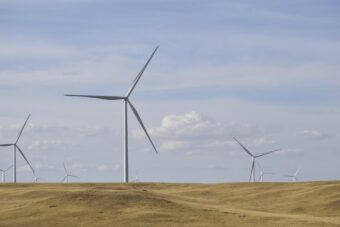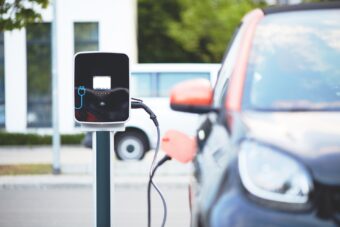
Insufficient progress in transitions to clean technologies and sustainable solutions over the past year highlights the need for strong and targeted international collaboration in high emissions sectors to deliver transitions that are faster, easier and cheaper for all, according to the latest Breakthrough Agenda Report.
The new report – an annual collaboration between the International Energy Agency (IEA), the International Renewable Energy Agency (IRENA) and the United Nations Climate Change High-Level Champions – shows that current efforts on clean energy and sustainable solutions, while improving, are not yet delivering the levels of investment and deployment required to meet international climate goals. In response, it calls on governments to strengthen collaboration in key areas – such as standards and regulation, financial and technical assistance and market creation – to turbocharge the transition.
More:
- COP28 PRESIDENT-DESIGNATE CALLS FOR HOLISTIC ECOSYSTEM TO DRIVE CLIMATE ACTION DURING LONDON CLIMATE ACTION WEEK
- CO2 EMISSIONS FROM EU TERRITORIAL ENERGY USE: -2.8 PERCENT
- CLEAN ENERGY INVESTMENT IS EXTENDING ITS LEAD OVER FOSSIL FUELS, BOOSTED BY ENERGY SECURITY STRENGTHS
Released on the eve of Climate Week NYC, the report examines the advances made and actions needed to meet the goals of the Breakthrough Agenda, a commitment signed by 48 countries representing close to 80 percent of global economic output since it was first launched at COP26 in Glasgow in 2021, and which announced a Partnership with the UAE COP28 Presidency in January 2023.
The annual process aims to align actions by countries to make clean technologies and sustainable solutions the most affordable, accessible and attractive option in each of five key sectors: power, road transport, steel, hydrogen and agriculture. The scope of coverage has been expanded in this year’s edition of the report to also cover buildings and cement. Collectively, these seven sectors account for more than 60 percent of global GHG emissions, while the focus of the Agriculture Breakthrough also addresses issues around climate adaptation, nature and food security.

The second annual report assesses progress made since 2022 in priority areas for international collaboration, and sets out a series of recommendations for countries to work together in each sector to help reduce emissions over the next decade and stave off the worst effects of climate change. The report shows how the transition to clean energy and sustainable solutions is accelerating across many sectors, with unprecedented expansion in technologies such as electric vehicles and solar PV. It highlights that electric passenger cars are set to account for 18 percent of total car sales in 2023, while investment in clean energy technologies is significantly outpacing spending on fossil fuels. But other high emissions and hard-to-abate sectors such as steel, hydrogen and agriculture are not transitioning quickly enough despite encouraging progress in some areas.
The report’s recommendations span financial assistance, research and development, demand-creation, infrastructure, standards and trade, to accelerate the transition in each sector. Coordinated actions in each of the seven sectors will help mobilise investment, and can create the economies of scale required to bring down the price of crucial technologies and sustainable agriculture solutions.
The report found that in the past year, only modest progress has been made in strengthening international collaboration in the areas where it is most needed. Progress has been made in expanding financial assistance to developing countries in some sectors, and in joint research and development initiatives. But much more progress is needed in aligning policies to create demand for clean technologies, and in establishing dialogue on trade in sectors where this is likely to be critical to the transition. In most sectors, participation in the leading initiatives for practical cooperation still falls short of a majority of the global market.
The report argues that greater political commitment is needed to progress from softer forms of collaboration, such as sharing best practice, to harder forms such as alignment of standards and policies, which are more difficult but can yield greater gains in mobilising investment and accelerating deployment.
Source: IEA



